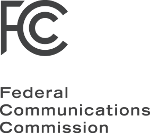FCC proposes rules for ATSC 3.0 introduction
Thursday, February 2nd, 2017
Next Gen TV Circulation Document
- In the Matter of: Authorizing Permissive Use of the “Next Generation” Broadcast Television Standard
The U.S. Federal Communications Commission (FCC) has announced that it is circulating a Notice of Proposed Rulemaking (NPRM) proposing to authorize television broadcasters to use the ATSC 3.0 broadcast television transmission standard on a voluntary, market-driven basis.
Introduction and Summary
In this Notice of Proposed Rulemaking (NPRM), we propose to authorize television broadcasters to use the “Next Generation” broadcast television (Next Gen TV) transmission standard associated with recent work of the Advanced Television Systems Committee (“ATSC 3.0”) on a voluntary, market-driven basis, while they continue to deliver current-generation digital television (DTV) broadcast service, using the “ATSC 1.0 standard,” to their viewers. ATSC 3.0 is being developed by broadcasters with the intent of merging the capabilities of over-the-air (OTA) broadcasting with the broadband viewing and information delivery methods of the Internet, using the same 6 MHz channels presently allocated for DTV.
According to a coalition of broadcast and consumer electronics industry representatives that has petitioned the Commission to authorize the use of ATSC 3.0, this new standard has the potential to greatly improve broadcast signal reception, particularly on mobile devices and television receivers without outdoor antennas, and it will enable broadcasters to offer enhanced and innovative new features to consumers, including Ultra High Definition (UHD) picture and immersive audio, more localized programming content, an advanced emergency alert system (EAS) capable of waking up sleeping devices to warn consumers of imminent emergencies, better accessibility options, and interactive services. With today’s action, we aim to facilitate private sector innovation and promote American leadership in the global broadcast industry.
In this proceeding, we seek to adopt rules that will afford broadcasters flexibility to deploy ATSC 3.0-based transmissions, while minimizing the impact on, and costs to, consumers and other industry stakeholders. Among other matters, we seek public input on the following issues and proposals:
- Voluntary Use. We propose to authorize voluntary use of ATSC 3.0 transmissions and to incorporate by reference the relevant portions of the ATSC 3.0 standard into our rules. We seek comment on which components of the standard should be incorporated into our rules.
- Local Simulcasting. We propose to require “local simulcasting” for stations that choose to deploy Next Gen TV transmissions so that broadcasters will continue to provide their existing ATSC 1.0-based services to their viewers. We seek comment on a number of issues relating to the implementation of local simulcasting.
- MVPD Carriage. We propose that MVPDs be required to continue carrying broadcasters’ ATSC 1.0 signals, but not be required to carry ATSC 3.0 signals, during the Next Gen TV transition. We also seek comment on issues related to the voluntary carriage of ATSC 3.0 signals through the retransmission consent process.
- Service and Interference Protection. We seek comment on whether Next Gen TV transmissions will raise any interference concerns for existing DTV operations or for any other services or devices that operate in the TV bands or in adjacent bands. We propose to calculate Next Gen TV interference to DTV signals using the methodology and planning factors specified in OET Bulletin 69 (OET-69). We also propose to define a “DTV-equivalent” service area for the Next Gen TV signal using the methodology and planning factors defined for DTV in OET-69 and to define a protection threshold for Next Gen TV signals that would be as robust as an equivalent DTV signal. Moreover, we seek comment on what, if any, additional interference protections are necessary with respect to other services and devices that operate in the TV bands or adjacent bands.
- Public Interest Obligations and Consumer Protection. We propose that television stations transmitting signals in ATSC 3.0 be subject to the public interest obligations currently applicable to television broadcasters. In addition, we seek comment on our tentative conclusion that it is unnecessary at this time to adopt an ATSC 3.0 tuner mandate for new television receivers. We seek comment on whether broadcasters should be required to provide on-air notifications to educate consumers about their transition to Next Gen TV service and on how to ensure that deployment of Next Gen TV-based transmissions will not negatively impact the post-incentive auction transition process.
Comment Date: [60 days after date of publication in the Federal Register]
Reply Comment Date: [90 days after date of publication in the Federal Register]
Latest News
- Tata Motors selects HARMAN Automotive's in-vehicle app store
- Media Distillery to power Swisscom ad-free replay product
- MagentaTV strengthens addressable TV business with Equativ
- Deutsche Telekom selects Broadpeak Cloud DVR solution for MagentaTV
- Nexxen empowers Australian advertisers using VIDAA ACR data
- TargetVideo integrates AI for video content categorization